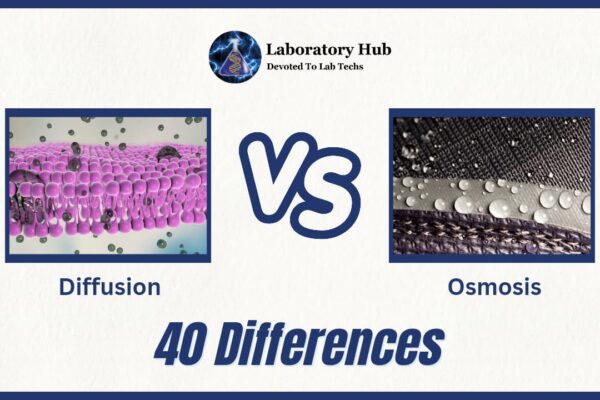35 Difference Between FSH and LH
The anterior pituitary gland in the brain produces two key hormones: FSH(Follicle-Stimulating Hormone) and LH(Luteinizing Hormone). They have critical roles in the regulation of the reproductive system in both males and females.
FSH(Follicle-Stimulating Hormone)
FSH is an abbreviation for “Follicle-Stimulating Hormone.” It’s a hormone made by the anterior pituitary gland, a tiny gland at the base of the brain. FSH is essential in the control of both male and female reproductive systems.
In males ,FSH activates the seminiferous tubules in the testes, which are responsible for sperm production.It aids in the formation and maturation of sperm cells, a process known as spermatogenesis.It collaborates with another hormone known as luteinizing hormone (LH) to regulate testosterone production, which is necessary for male reproductive function and the development of secondary sexual characteristics.
In females ,FSH stimulates the formation and development of ovarian follicles, which are tiny fluid-filled sacs within the ovaries containing developing eggs (oocytes).The hormone oestrogen is released in increasing amounts as the follicles grow and mature.It levels are highest at the start of the menstrual cycle, when numerous follicles are recruited. Eventually, one follicle becomes dominant and continues to grow, while the others degenerate.
Ovulation is triggered by an increase in FSH levels, which results in the release of a mature egg from the dominant follicle. Following ovulation, the follicle’s remaining portion converts into the corpus luteum, which generates progesterone.
LH(Luteinizing Hormone)
The anterior pituitary gland, a tiny gland near the base of the brain, produces the hormone luteinizing hormone (LH). LH is a component of the endocrine system that regulates reproductive activities in both males and females.
In females, one of the key functions of LH is to stimulate ovulation. The process through which a mature egg is released from the ovary and becomes ready for fertilisation is known as ovulation. The mid-menstrual cycle rise in LH levels leads the mature follicle to burst, delivering the egg into the fallopian tube. When attempting to determine the most fertile period in a woman’s cycle, ovulation prediction kits typically detect this rise in LH.
After ovulation, the follicle from which the egg was released turns into a structure known as the corpus luteum. The corpus luteum generates progesterone, which is necessary for uterine lining maintenance and the early stages of a potential pregnancy.
In males , LH is essential for stimulating Leydig cells in the testes to create testosterone. Testosterone is the principal male sex hormone, responsible for the development of secondary sexual traits in males (such as facial hair, voice deepening, and muscle growth), as well as the regulation of sperm production.
Here are 35 differences between FSH (Follicle-Stimulating Hormone) and LH (Luteinizing Hormone):
Also Read: Cytokines vs Chemokines- 15 Major Differences
S.No. | Aspects | FSH (Follicle-Stimulating Hormone) | LH (Luteinizing Hormone) |
1 | Hormone Type | Glycoprotein hormone | Glycoprotein hormone |
2 | Production Site | Anterior pituitary gland | Anterior pituitary gland |
3 | Target Organs | Ovaries and testes | Ovaries and testes |
4 | Primary Function in Males | Stimulates spermatogenesis | Stimulates testosterone production |
5 | Primary Function in Females | Stimulates follicular development | Induces ovulation and corpus luteum formation |
6 | Timing of Secretion | Early follicular phase of menstrual cycle | Surge just before ovulation |
7 | Levels During Menstrual Cycle | Peak before ovulation | Surge before ovulation |
8 | Feedback Regulation | Regulated by inhibin and estradiol | Regulated by inhibin and estradiol |
9 | Rate of Secretion | Relatively constant | Exhibits a surge during ovulation |
10 | Influence on Spermatogenesis | Essential for spermatogenesis | Supports spermatogenesis indirectly via testosterone |
11 | Influence on Testosterone | Does not directly stimulate testosterone production | Stimulates Leydig cells to produce testosterone |
12 | Influence on Ovulation | Does not trigger ovulation directly | Induces ovulation |
13 | Application in Ovulation Prediction | Not typically used for ovulation prediction | Used in ovulation prediction kits (OPKs) |
14 | Influence on Follicle Growth | Promotes follicle growth and maturation | Induces the final stages of follicular maturation |
15 | Role in Luteal Phase | Not directly involved in the luteal phase | Stimulates the formation and maintenance of the corpus luteum |
16 | Use in Assisted Reproduction | Used in assisted reproductive technologies to stimulate follicle development | Sometimes used in combination with FSH to trigger ovulation |
17 | Influence on Estrogen Production | Stimulates granulosa cells to produce estradiol | Also stimulates the production of estradiol |
18 | Levels During Pregnancy | Low during pregnancy | Generally low during pregnancy |
19 | Role in Menopause | Levels increase significantly during menopause | Levels also increase during menopause |
20 | Interaction with Hypothalamus | Affected by gonadotropin-releasing hormone (GnRH) from the hypothalamus | Also influenced by GnRH from the hypothalamus |
21 | Binding to Receptors | Binds to FSH receptors | Binds to LH receptors |
22 | Molecular Weight | Slightly heavier molecule | Slightly lighter molecule |
23 | Role in Gonadal Maturation | Initiates gonadal maturation | Completes gonadal maturation |
24 | Influence on Uterus | Does not have direct effects on the uterus | May have some indirect effects on the uterus through hormone interactions |
25 | Role in Colligative Properties | Affects colligative properties of solutions | Also affects colligative properties, particularly lowering the vapor pressure |
26 | Influence on Water Potential | Doesn’t directly influence water potential | Can significantly affect water potential |
27 | Role in Testicular Function | Important for normal testicular function | Necessary for normal testicular function |
28 | Role in Ovarian Function | Essential for normal ovarian function | Essential for normal ovarian function |
29 | Effect on Gonadotropin Levels | Influences LH and FSH levels | Influences FSH and LH levels |
30 | Role in Polycystic Ovary Syndrome (PCOS) | May not be directly affected by PCOS | Often affected by PCOS |
31 | Levels in Polycystic Ovary Syndrome (PCOS) | Typically normal or slightly elevated in PCOS | Often elevated in PCOS |
32 | Role in Ovarian Hyperstimulation Syndrome (OHSS) | Can contribute to OHSS when used in fertility treatments | Also involved in OHSS development when used in fertility treatments |
33 | Impact on Food Preservation | Used for processes like drying and salting | Osmotic pressure used in food preservation techniques like pickling |
34 | Molecular Movement | Involves the movement of individual solute molecules | Primarily involves the movement of solvent molecules in clusters |
35 | Role in Reproductive Cycles | Initiates and sustains the early stages of the reproductive cycle | Triggers the events leading to ovulation and corpus luteum formation |
Also Read: Humoral vs Cell-mediated Immunity- 27 Differences
Frequently Asked Questions (FAQs)
FSH and LH levels change during the menstrual cycle. Both FSH and LH levels are quite low at the start of the cycle. FSH levels rise as the cycle proceeds, encouraging the development of ovarian follicles. There is a spike in LH levels just before ovulation, which causes the egg to be released.
FSH and LH levels are frequently evaluated in people undergoing reproductive treatment. Abnormal levels can suggest reproductive system problems. FSH levels can help determine ovarian reserve (the amount and quality of eggs), and LH levels can predict ovulation timing.
Blood testing can be used to determine FSH and LH levels. These tests are frequently used to acquire information on reproductive health on various days of the menstrual cycle.
FSH or LH levels that are abnormal can suggest a variety of reproductive health concerns. For example, high FSH levels in women may indicate a depleted ovarian reserve, whereas low levels may signal a pituitary gland dysfunction. High or low levels of these hormones in males can have an impact on sperm production and testosterone levels.
Hormonal contraceptives, such as birth control pills, patches, and hormonal IUDs, frequently function by reducing FSH and LH variations. This helps to prevent ovulation and, as a result, conception.







